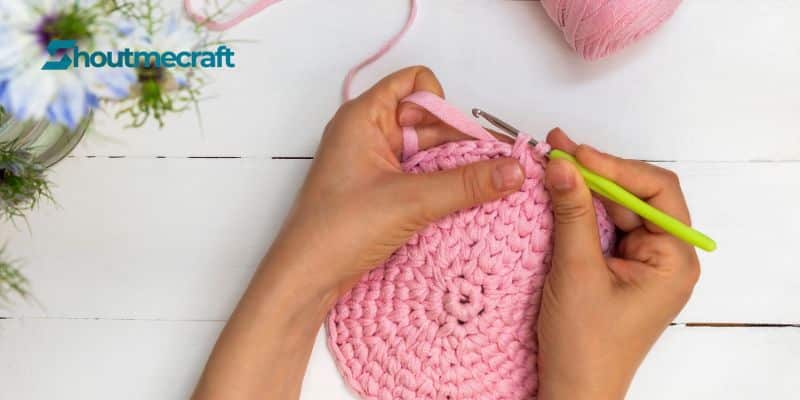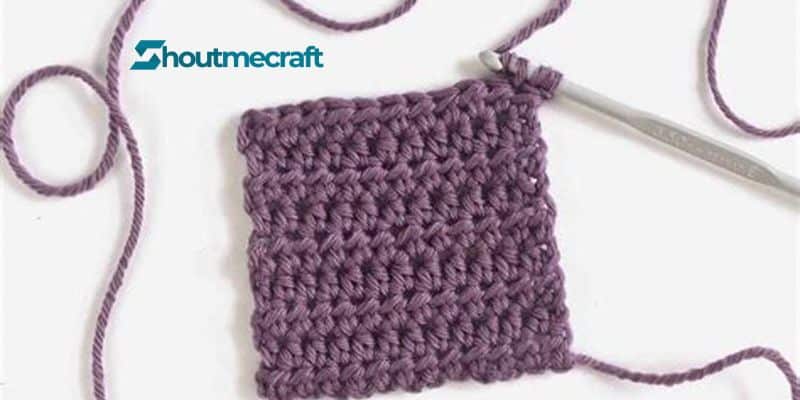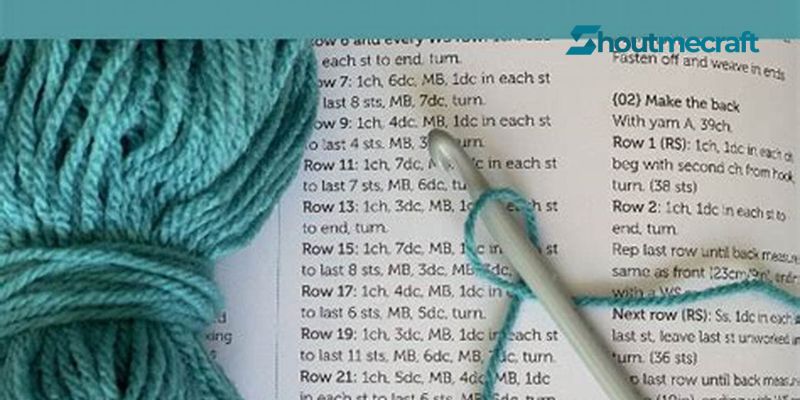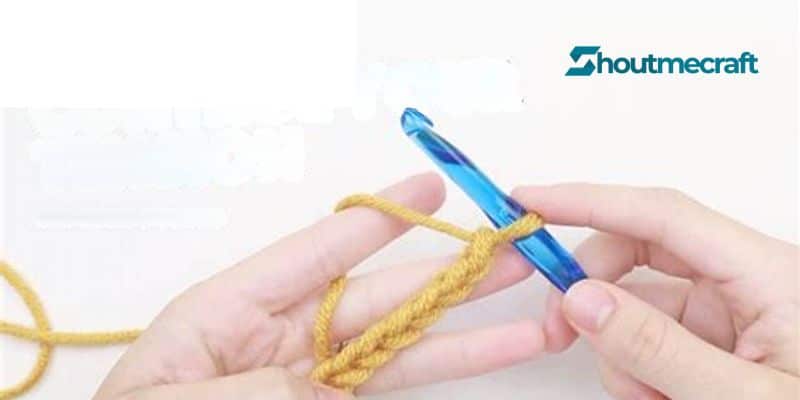Crochet tips for beginners refer to advice and guidance provided to individuals who are new to the craft of crocheting.
These tips can encompass a wide range of topics, from selecting the right materials and understanding basic stitches to following patterns and troubleshooting common mistakes.
Learning to crochet offers numerous benefits. Not only can it be a relaxing and enjoyable pastime, but it also stimulates creativity, improves hand-eye coordination, and provides a sense of accomplishment.
Additionally, crocheting has a rich historical context, dating back centuries and practiced in diverse cultures around the world.
To delve deeper into the world of crochet tips for beginners, let’s explore some essential aspects:
Essential Aspects of Crochet for Beginners
Embarking on the delightful journey of crochet requires attention to several key aspects:
- Materials Mastery: Selecting the right yarn, hook, and notions.
- Stitch Basics: Understanding fundamental stitches like single crochet, double crochet, and slip stitch.
- Pattern Reading: Deciphering crochet patterns and understanding symbols.
- Tension Control: Maintaining consistent stitch tension for even fabric.
- Common Mistakes: Identifying and correcting frequent errors, such as dropped stitches.
- Project Planning: Choosing suitable projects for skill level and yarn choice.
- Finishing Techniques: Learning methods to neaten and enhance finished projects.
- Inspiration Gathering: Exploring online resources, books, and crochet communities for ideas and support.
These aspects are interconnected and crucial for crocheters to grasp. Understanding materials and stitches forms the foundation, while deciphering patterns and controlling tension ensures project success.
Recognizing common mistakes helps troubleshoot, and project planning prevents frustration.
Finishing techniques add a touch of professionalism, and inspiration gathering fuels creativity.
Together, these aspects empower beginners to navigate the world of crochet with confidence and enjoyment.
Materials Mastery

For beginners embarking on their crochet journey, “Materials Mastery” holds immense significance as a foundational component of “crochet tips for beginners.”
Selecting the appropriate yarn, hook, and notions directly influences the ease of learning, the quality of the finished product, and the overall enjoyment of the crocheting experience.
Choosing the right yarn involves considering factors such as fiber content, weight, and texture. Different yarns impact the drape, warmth, and durability of the crocheted fabric.
Similarly, selecting the correct hook size is crucial to achieve the desired stitch gauge and prevent frustration.
Notions like stitch markers, yarn needles, and scissors further enhance the crocheting process, making it more efficient and organized.
Understanding the connection between “Materials Mastery” and “crochet tips for beginners” empowers crocheters to make informed decisions.
By carefully selecting their materials, beginners can set themselves up for success, minimize common pitfalls, and produce beautiful crocheted items that they will cherish.
Stitch Basics

Stitch Basics lie at the very core of “crochet tips for beginners.” Mastering fundamental stitches like single crochet, double crochet, and slip stitch empowers crocheters with the building blocks of their craft.
These stitches form the foundation upon which more complex patterns and projects are constructed.
Understanding how to execute these stitches correctly is essential for creating even, consistent fabric and avoiding common mistakes.
The significance of Stitch Basics in “crochet tips for beginners” cannot be overstated. Without a solid grasp of these fundamental stitches, beginners may struggle to follow patterns, achieve desired results, and progress in their crochet journey.
Moreover, understanding Stitch Basics enables crocheters to troubleshoot problems effectively, identify and correct errors, and ultimately produce beautiful, polished crocheted items.
Real-life examples further illustrate the practical significance of Stitch Basics. For instance, mastering the single crochet stitch is crucial for creating amigurumi (crocheted stuffed animals), while double crochet forms the basis of many blankets and garments. Slip stitch, often used for joining and edging, adds a touch of elegance and functionality to crocheted projects.
In conclusion, Stitch Basics are indispensable for “crochet tips for beginners.” By dedicating time and effort to understanding and practicing these fundamental stitches, beginners lay a solid foundation for their crochet journey.
This understanding empowers them to create beautiful, polished crocheted items, troubleshoot problems effectively, and progress in their craft with confidence.
Pattern Reading

Pattern Reading plays a pivotal role in “crochet tips for beginners,” as it empowers crocheters to transform written instructions into beautiful, tangible creations.
Deciphering crochet patterns and understanding symbols is essential for accurate stitch execution, following complex instructions, and achieving desired results.
- Understanding Pattern Structure: Crochet patterns typically comprise abbreviations, stitch counts, and special instructions. Grasping the overall structure of a pattern enables beginners to navigate it effectively and identify key elements.
- Symbol Recognition: Crochet symbols are a shorthand notation used in patterns to represent stitches. Understanding these symbols is crucial for interpreting patterns correctly and crocheting the intended design.
- Stitch Sequencing: Patterns provide instructions on the order and repetition of stitches. Accurate stitch sequencing is essential for creating the desired fabric texture and shape.
- Row and Round Identification: Crochet patterns often involve working in rows or rounds. Identifying and counting rows and rounds ensures the correct placement of stitches and the overall shape of the crocheted item.
In summary, Pattern Reading is a fundamental aspect of “crochet tips for beginners.”
By understanding pattern structure, recognizing symbols, sequencing stitches accurately, and identifying rows and rounds, beginners can unlock the potential of crochet patterns.
This empowers them to create beautiful crocheted items, follow complex instructions with confidence, and progress in their craft.
Tension Control

Tension Control, the art of maintaining consistent stitch tension while crocheting, holds immense significance in “crochet tips for beginners.”
Even stitch tension ensures the crocheted fabric possesses uniform appearance, texture, and durability.
Understanding the principles of Tension Control empowers beginners to create beautiful, polished crocheted items.
- Uniform Appearance: Consistent stitch tension prevents noticeable variations in stitch size and shape, resulting in a visually pleasing, professional-looking fabric.
- Even Texture: Maintaining even tension ensures the crocheted fabric has a uniform texture, free from tight or loose stitches that can compromise its drape and overall aesthetic appeal.
- Durability and Longevity: Balanced stitch tension contributes to the durability of the crocheted item by preventing weak spots or uneven wear. This extends the lifespan of the crocheted creation.
- Stitch Definition: Consistent tension allows each stitch to be clearly defined, showcasing the intricate details and patterns of the crocheted design.
In summary, Tension Control is a fundamental aspect of “crochet tips for beginners.”
By mastering Tension Control, beginners can create beautiful, durable crocheted items with uniform appearance, even texture, and well-defined stitches.
This empowers them to produce high-quality crocheted creations that are both pleasing to the eye and built to last.
Common Mistakes
“Common Mistakes: Identifying and Correcting Frequent Errors, Such as Dropped Stitches” plays a crucial role in “crochet tips for beginners.”
Crochet, like any skill, involves a learning curve, and encountering common mistakes is an inherent part of the journey.
Understanding these mistakes and their solutions empowers beginners to troubleshoot effectively, avoid frustration, and produce polished crocheted items.
Dropped stitches, a frequent error among beginners, occur when a loop of yarn slips off the crochet hook during stitching.
This can result in holes or gaps in the fabric, compromising its appearance and structural integrity.
Recognizing dropped stitches promptly and implementing the appropriate corrective measures is essential for maintaining the quality and continuity of the crocheted piece.
Correcting dropped stitches involves carefully reinserting the hook into the missed stitch and reworking the loop onto the hook.
This process requires patience and attention to detail to ensure the stitch is securely fastened and the fabric’s integrity is maintained.
By addressing dropped stitches promptly, beginners can minimize their impact on the overall project and develop a keen eye for detail.
Understanding and addressing common mistakes, such as dropped stitches, is a fundamental aspect of “crochet tips for beginners.” This knowledge empowers crocheters to identify and rectify errors, preventing them from becoming persistent issues.
It fosters a sense of confidence and competence, allowing beginners to approach their crochet projects with a proactive mindset, ready to tackle any challenges that may arise.
Project Planning
“Project Planning: Choosing Suitable Projects for Skill Level and Yarn Choice” is a pivotal component of “crochet tips for beginners.”
It lays the foundation for successful and enjoyable crochet experiences. Selecting appropriate projects and yarns empowers beginners to set themselves up for triumph, minimizing frustration and maximizing their learning potential.
Understanding one’s skill level is paramount in project selection. Beginners should opt for projects tailored to their current abilities, avoiding overly complex patterns that may lead to discouragement.
Starting with beginner-friendly projects allows crocheters to build confidence, master fundamental techniques, and gradually progress to more intricate designs.
Yarn choice also plays a significant role in project planning. Different yarns possess unique characteristics, such as fiber content, weight, and texture.
Choosing the right yarn for the intended project ensures the finished item meets its intended purpose and aesthetic appeal.
For instance, a soft, lightweight yarn is ideal for garments, while a durable, weather-resistant yarn is better suited for outdoor projects.
By carefully considering their skill level and yarn choice, beginners can set themselves up for crochet success.
This understanding empowers them to choose projects that align with their abilities, utilize appropriate materials, and produce crocheted items that they will cherish for years to come.
Finishing Techniques

Finishing Techniques hold a significant place in “crochet tips for beginners” as they empower crocheters to elevate their creations from ordinary to extraordinary.
These techniques encompass a range of methods employed to neaten, enhance, and personalize crocheted projects, adding a touch of professionalism and finesse.
Understanding and applying Finishing Techniques is crucial for crocheters to produce polished, durable, and aesthetically pleasing items that stand the test of time.
Finishing Techniques encompass various aspects, including:
- Seaming and Joining: Joining crocheted pieces seamlessly to create larger items, such as blankets, garments, and amigurumi.
- Blocking: Shaping and evening out crocheted fabric using moisture and heat to achieve the desired dimensions and enhance stitch definition.
- Embellishments and Edgings: Adding decorative elements, such as tassels, fringes, or lace, to enhance the visual appeal and functionality of crocheted items.
By incorporating Finishing Techniques into their repertoire, beginners can:
- Achieve a Professional Finish: Neat and polished seams, even edges, and well-defined stitches elevate the overall appearance of crocheted projects.
- Enhance Durability: Proper seaming and joining techniques strengthen the crocheted fabric, increasing its longevity and resilience.
- Personalize Creations: Embellishments and edgings allow crocheters to express their creativity and add unique touches to their projects.
In conclusion, Finishing Techniques are an integral part of “crochet tips for beginners” as they enable crocheters to refine their skills, create polished items, and unleash their creativity.
Embracing these techniques empowers beginners to produce crocheted projects that are not only beautiful but also durable and personalized, fostering a sense of accomplishment and pride in their craft.
Inspiration Gathering
Inspiration Gathering holds a significant place within the realm of “crochet tips for beginners” as it serves as a catalyst for creativity, skill development, and overall enjoyment of the craft.
Embracing Inspiration Gathering empowers beginners to transcend the boundaries of their current knowledge and venture into a world of endless possibilities, fostering a continuous learning journey.
The internet provides a vast repository of crochet-related resources, offering a wealth of patterns, tutorials, and expert advice.
Online communities, such as forums and social media groups, connect crocheters from all walks of life, enabling knowledge sharing, project inspiration, and troubleshooting assistance.
Books, both classic and contemporary, offer a structured approach to learning crochet, providing in-depth explanations, step-by-step instructions, and inspiring project ideas.
By actively engaging in Inspiration Gathering, beginners can:
- Expand their Crochet Horizons: Exposure to diverse patterns, techniques, and design concepts broadens their crochet vocabulary and stimulates their creativity.
- Enhance Skill Development: Tutorials and expert advice provide valuable insights, enabling beginners to refine their techniques, troubleshoot common challenges, and elevate their overall crochet abilities.
- Cultivate a Sense of Community: Connecting with other crocheters fosters a sense of belonging and support, offering encouragement, motivation, and a platform for sharing experiences.
In conclusion, Inspiration Gathering is an indispensable aspect of “crochet tips for beginners” as it nourishes creativity, enhances skill development, and fosters a sense of community.
By embracing the wealth of resources available online, in books, and within crochet communities, beginners can unlock their full potential as crocheters, embark on a lifelong journey of learning and exploration, and experience the profound joy and fulfillment that the craft of crochet offers.
Frequently Asked Questions (FAQs)
This comprehensive FAQ section addresses common concerns and misconceptions encountered by beginners embarking on their crochet journey.
These questions aim to provide clear and informative answers, empowering individuals to navigate the world of crochet with confidence and success.
Question 1: Is crochet difficult to learn?
Answer: Crochet may seem intimidating at first, but with patience and practice, it is an accessible craft for individuals of all ages and skill levels. By mastering fundamental stitches and techniques, beginners can gradually progress to more intricate projects.
Question 2: What are the essential materials I need to start crocheting?
Answer: To embark on your crochet adventure, you will require yarn, a crochet hook, a yarn needle, and scissors. Choosing the appropriate yarn and hook size is crucial for achieving the desired results.
Question 3: How do I read a crochet pattern?
Answer: Understanding crochet patterns is essential for following instructions accurately. Patterns typically include abbreviations, stitch counts, and special instructions. Familiarizing yourself with crochet symbols and pattern structure will enable you to interpret patterns effectively.
Question 4: How can I avoid common mistakes while crocheting?
Answer: Practice and attention to detail are key to minimizing errors. Common mistakes include dropped stitches, incorrect stitch tension, and misreading patterns. By carefully following instructions and practicing regularly, beginners can develop the skills to avoid these pitfalls.
Question 5: What are some tips for improving my crochet skills?
Answer: Consistent practice, experimenting with different stitches and techniques, and seeking guidance from experienced crocheters or online resources can significantly enhance your crochet abilities. Additionally, joining crochet communities or attending workshops provides opportunities for learning and sharing knowledge.
Question 6: How can I troubleshoot common crochet problems?
Answer: Troubleshooting crochet issues involves identifying the source of the problem and finding a solution. This may require checking for dropped stitches, adjusting stitch tension, or seeking assistance from online forums or experienced crocheters. With patience and a systematic approach, most crochet problems can be resolved.
In conclusion, seeking answers to frequently asked questions is a valuable step in the learning process for crochet beginners. Understanding the basics, troubleshooting common issues, and continuously seeking knowledge will empower individuals to progress confidently in their crochet journey.
As you delve deeper into the world of crochet, remember to approach the craft with enthusiasm, embrace learning opportunities, and seek support when needed. With dedication and the guidance provided in this FAQ section, you will undoubtedly unlock the joys and fulfillment that crochet has to offer.
Tips for Crochet Beginners
Embarking on the delightful journey of crochet requires embracing a set of fundamental principles and techniques that will serve as the foundation for your creative endeavors.
These tips, carefully curated for beginners, will guide you towards mastering the art of crochet with confidence and precision.
Tip 1: Master the Basic Stitches: The cornerstone of crochet lies in mastering the fundamental stitches, including single crochet, double crochet, and slip stitch. Practice these stitches diligently until they become second nature, as they form the building blocks of countless crochet patterns.
Tip 2: Understand Crochet Terminology: Familiarize yourself with the crochet lexicon, including terms like “yarn over,” “chain stitch,” and “treble crochet.” Comprehending these terminologies will empower you to decipher patterns effortlessly and execute stitches accurately.
Tip 3: Choose the Right Hook and Yarn: Selecting the appropriate crochet hook and yarn is crucial for achieving the desired outcome. Consider the thickness of the yarn and the hook size recommended for the pattern to ensure harmonious stitches and a beautiful finished product.
Tip 4: Maintain Consistent Tension: Consistency in stitch tension is paramount for creating an even and visually appealing fabric. Practice maintaining an even rhythm as you crochet, avoiding overly tight or loose stitches that can compromise the integrity of your work.
Tip 5: Read and Understand Patterns: The ability to decipher crochet patterns is essential for following instructions and creating the desired design. Take the time to study the pattern, identify abbreviations, and understand the sequence of stitches required to bring your vision to life.
Tip 6: Practice Regularly: The path to crochet mastery lies in consistent practice. Dedicate time each day to honing your skills, experimenting with different stitches and patterns to expand your repertoire and elevate your craftsmanship.
Tip 7: Seek Support and Inspiration: Connect with fellow crocheters through online forums or local groups to share knowledge, seek advice, and find inspiration for your next project. The crochet community is a vibrant and supportive network that can enrich your learning journey.
Tip 8: Don’t Be Afraid to Make Mistakes: Mistakes are an inherent part of the learning process. Embrace them as opportunities to identify areas for improvement and refine your technique. With patience and perseverance, you will overcome any challenges and emerge as a skilled crocheter.
Embracing these tips will provide you with a solid foundation for your crochet journey. Remember, the key to success lies in consistent practice, seeking knowledge, and nurturing your passion for this beautiful craft.
Conclusion
The journey of a thousand stitches begins with the exploration of “crochet tips for beginners.” This article has provided a comprehensive overview of fundamental principles, essential techniques, and invaluable advice to empower aspiring crocheters with the knowledge and confidence to embark on their creative endeavors.
From mastering basic stitches to understanding crochet terminology and selecting the appropriate tools, each tip laid forth in this article serves as a stepping stone toward crochet mastery. By embracing these guidelines and dedicating time to consistent practice, beginners can unlock the boundless possibilities of this versatile craft.
Remember, the true essence of crochet lies not solely in the finished product but in the mindful process of creation itself. Take pleasure in the rhythmic flow of the hook, the transformation of yarn into intricate patterns, and the satisfaction of completing a handmade masterpiece.
As you delve deeper into the world of crochet, embrace the learning opportunities that arise, seek inspiration from fellow crocheters, and never hesitate to experiment with different techniques. With patience, dedication, and a touch of creativity, you will undoubtedly conquer the challenges that come your way and emerge as a skilled and passionate crocheter.
May your crochet journey be filled with countless moments of joy, fulfillment, and the creation of cherished handmade treasures.